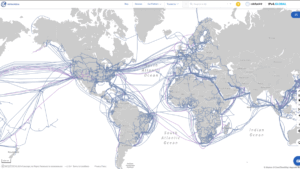
Understanding Network Congestion
Network congestion is a common issue that can significantly impact the efficiency of data transmission over a network. To effectively address this problem, it’s crucial to pinpoint where congestion is occurring. This typically involves identifying two key points in the network where data transfer is hindered.
Network congestion can arise from the following factors:
- Congestion at one endpoint of the connection.
- Congestion at the opposite endpoint of the connection.
- Congestion along the transmission path between the two endpoints.
- A combination of the above scenarios.
To diagnose congestion at an endpoint, conducting speed tests to various destinations from the affected point can provide insights into the specific limitations at that location.
If the congestion occurs within the connection path, tools like MTR are valuable as they can show where along the path the issues arise. However, it’s important to note that these tools might not always provide a complete picture. This is because signaling packets—used for network diagnostics—may be processed differently from the TCP or UDP packets utilized by applications and speed test tools.
At MassiveGRID, we prioritize the reliability and speed of our network. Our infrastructure includes redundant routers connected directly to the top-10, Tier-1 providers. This setup is monitored 24×7, ensuring our clients enjoy global access to low-latency, high-capacity, and uncongested bandwidth. This robust network design allows us to eliminate the common causes of network congestion effectively from our side, providing our clients with a premium service.
